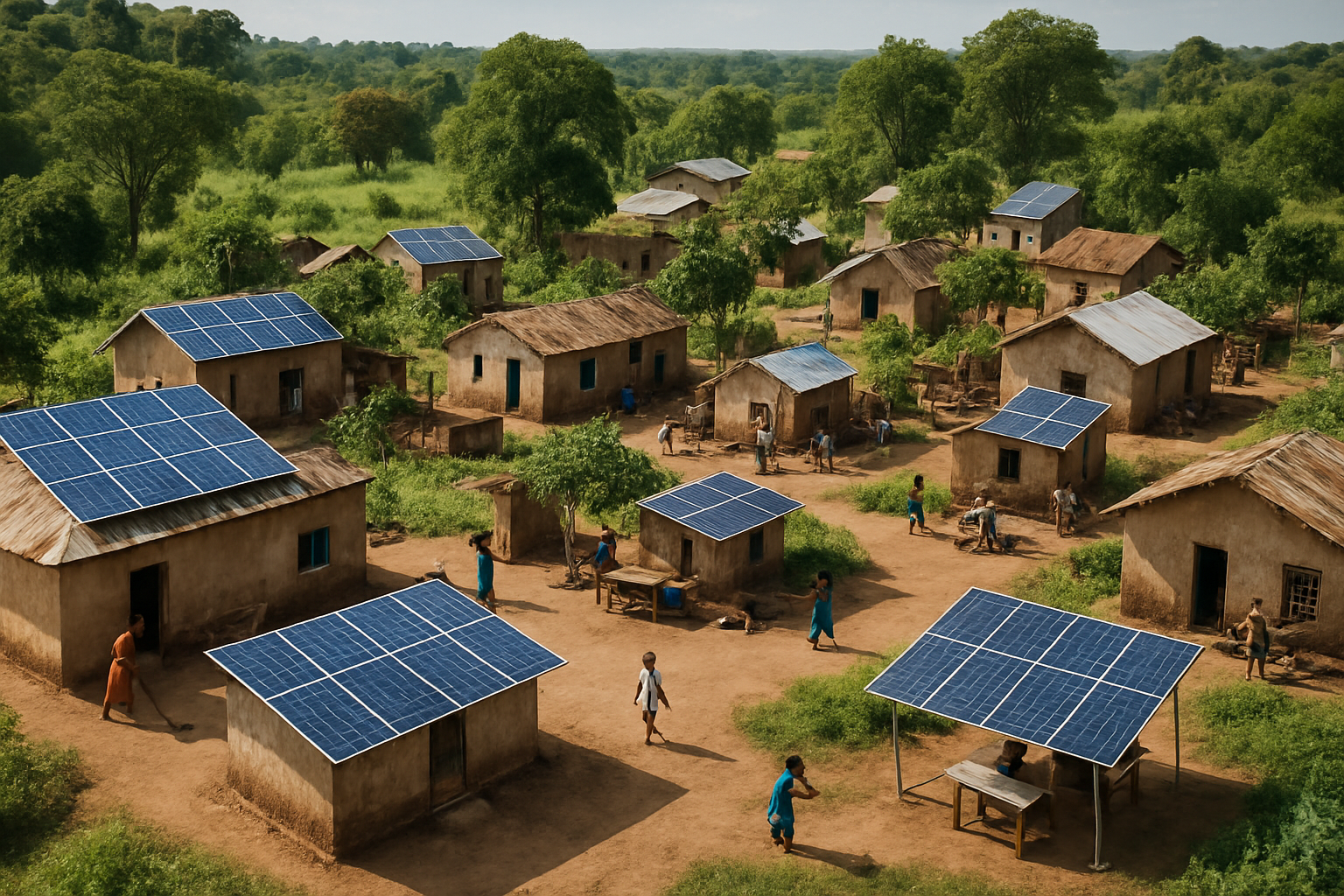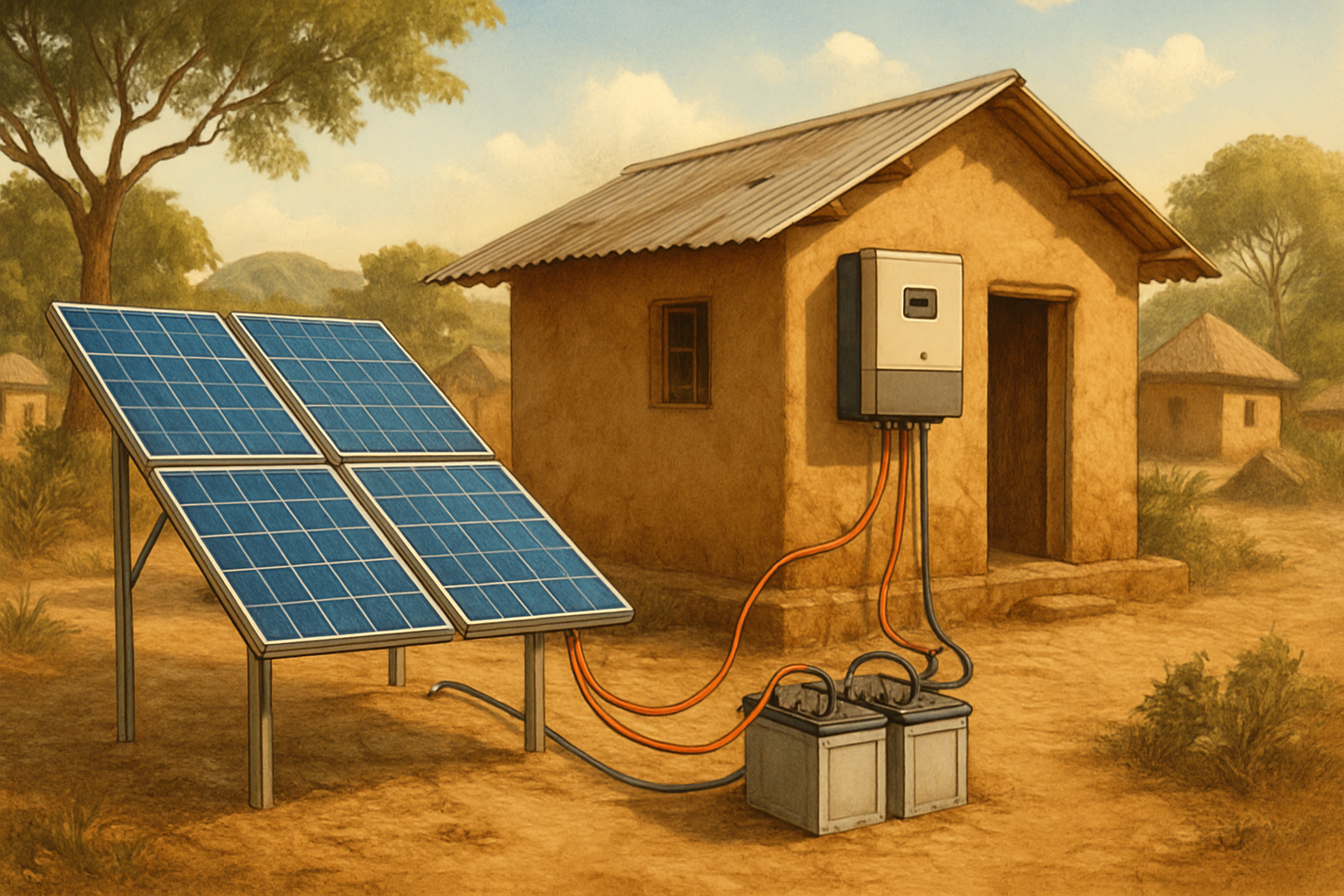Many remote communities face significant challenges in securing consistent, affordable electricity. Often, these areas rely on diesel generators, which bring high fuel costs, logistical complexities, and environmental concerns. However, innovative off-grid solar solutions are transforming this landscape. The journey of Ta'u Island in American Samoa offers a compelling example of how a PV-battery microgrid can successfully replace traditional fossil fuels, paving the way for energy independence and sustainable development.

The Energy Dilemma in Remote Regions
Providing reliable electricity to isolated villages and islands presents unique hurdles. Extending national grids to these distant locations is often not economically feasible, leaving many communities dependent on costly and often unreliable alternatives. For approximately 18 million people in Southeast Asia alone, access to electricity remains a challenge, making renewable-based microgrids a sustainable solution, according to the Southeast Asia Energy Outlook 2024.
Reliance on Diesel Generators
Diesel generators have historically served as the primary power source for off-grid areas. While they offer immediate power, their operation comes with substantial drawbacks. Fuel transportation to remote islands can be expensive and logistically complex, often requiring specialized infrastructure and frequent deliveries. This leads to high operating costs that burden local economies. Furthermore, burning diesel contributes significantly to air pollution, releasing particulate matter and nitrogen oxides, and generates greenhouse gas emissions, impacting local environments and global climate efforts.
The Economic and Environmental Burden
The financial strain of diesel-generated electricity can severely hinder economic growth and quality of life in remote communities. Fluctuating global fuel prices make budgeting unpredictable and can divert scarce funds from other essential services like education or healthcare. Environmentally, the continuous use of fossil fuels contradicts global efforts towards cleaner energy and sustainable practices. The need for a more stable, cleaner, and affordable energy source is not just an environmental imperative but an economic necessity for these regions.
Ta'u Island's Pioneering Microgrid Solution
Ta'u Island, a small island in American Samoa, faced these very challenges. Its residents relied heavily on diesel fuel for their electricity needs, enduring high costs and the environmental impact of constant generator operation. Recognizing these limitations, the island embarked on a groundbreaking project to transition to a fully renewable energy system.
System Design and Rapid Deployment
In a remarkable achievement, Ta'u Island implemented a 1.4 MW solar PV microgrid complemented by a substantial 6 MWh of lithium-ion battery storage. This robust system, powered by 60 individual battery packs, was designed for maximum resilience and energy independence. The entire project was completed within a single year, demonstrating the speed and efficiency with which modern renewable energy solutions can be deployed in remote settings. This setup provides the island with three days of power autonomy, drastically reducing the need for diesel generators and ensuring a consistent power supply. The Electricity Storage Valuation Framework highlights that battery storage systems are a key technology enabler for the transition to renewable energy systems, particularly in island nations highly dependent on fossil fuels.
Ending Diesel Dependence
The successful deployment of the PV-battery microgrid on Ta'u Island effectively ended the island's reliance on diesel for power generation. This monumental shift brought immediate and profound benefits, including a stable electricity supply, significantly reduced energy costs, and a cleaner, healthier environment. It serves as a powerful testament to a viable pathway for other island nations and remote communities to move away from fossil fuels towards sustainable, self-sufficient power systems. This transition is not merely about replacing one energy source with another; it is about empowering communities with reliable, long-term energy security.
The Technology Powering Energy Independence
The success of projects like Ta'u Island's microgrid relies on advanced solar and energy storage technologies working in harmony. These systems are meticulously designed for resilience and efficiency, offering a robust and sustainable alternative to traditional, centralized power grids.
Solar PV and Advanced Battery Storage
Solar photovoltaic (PV) panels form the backbone of these microgrids, capturing sunlight and converting it directly into usable electricity. This energy is then stored in sophisticated battery systems. Lithium iron phosphate (LiFePO4) batteries are a popular choice due to their high performance, exceptional safety profile, long cycle life, and deep discharge capabilities. These characteristics make them ideal for demanding off-grid applications, ensuring a continuous power supply even when solar generation is low or during peak demand periods. The Success Story—New Tool Connects Multiple Microgrids to Increase Community Resilience explains that microgrids often use solar energy and batteries, allowing them to work independently by storing and releasing energy as needed.
When comparing energy costs, renewable microgrids offer a compelling economic advantage over diesel. According to the Southeast Asia Energy Outlook 2024, the levelized costs of renewable microgrids range from 0.40 to 0.61 USD/kWh. This is significantly lower than diesel's levelized cost, which typically falls between 0.92 and 1.30 USD/kWh, highlighting the long-term financial benefits of clean energy solutions.
| Energy Source | Levelized Cost of Electricity (USD/kWh) |
|---|---|
| Renewable Microgrids (PV-Battery) | 0.40 - 0.61 |
| Diesel Generators | 0.92 - 1.30 |
Intelligent Microgrid Management
Modern microgrids integrate advanced control systems, including sophisticated grid-forming inverter technologies. These inverters are crucial as they enable the microgrid to operate entirely independently, providing all necessary power system services—such as voltage and frequency regulation—without relying on conventional synchronous generators. The Electricity Storage Valuation Framework notes that at the mini-grid level (from a few watts to tens of megawatts), this technology is proven, with over a decade-long track record of reliable operations in some of the most remote and environmentally demanding conditions. This capability is vital for achieving 100% renewable electricity generation in off-grid areas, utilizing readily available and cost-competitive technologies. Effective system integration ensures seamless operation, maximizing energy harvest and optimizing battery usage for sustained reliability.
Broader Impact and Future Pathways
The success of Ta'u Island provides a powerful blueprint for sustainable energy development in remote communities globally. This model offers significant economic, environmental, and social benefits, demonstrating a clear path towards a more resilient and equitable energy future.
Economic and Environmental Advantages
Transitioning to solar-plus-storage microgrids eliminates the ongoing expense of purchasing, transporting, and storing diesel fuel. This leads to substantial operational cost savings over the system's lifetime, freeing up resources for other community development initiatives. Environmentally, it drastically reduces greenhouse gas emissions and local air pollution, contributing to cleaner air and a healthier planet. These systems also enhance energy security, insulating communities from volatile fossil fuel markets and geopolitical uncertainties, providing a stable foundation for local economies.
Addressing Implementation Challenges
While the operational costs of renewable microgrids are significantly lower, the initial capital investment can be substantial. Overcoming this requires innovative financing mechanisms, such as grants, concessional loans, and public-private partnerships, along with supportive regulatory policies. The Southeast Asia Energy Outlook 2024 emphasizes that high interest rates and perceived risks with new technologies complicate access to finance, making regulatory clarity and supportive policies crucial. Governments can create frameworks that attract private investment and ensure grid compatibility, fostering an environment conducive to microgrid deployment.
Technical challenges also arise from diverse geographies and climates. Island microgrids, for instance, must be engineered to withstand severe weather events like typhoons and cope with high humidity, requiring robust system design tailored to local environmental conditions. The Southeast Asia Energy Outlook 2024 highlights these specific design requirements. Our extensive experience in the solar and energy storage industry, particularly with durable LiFePO4 batteries and integrated ESS, helps us address these unique design and deployment challenges, ensuring long-term system reliability and performance.
Looking Ahead
The Ta'u Island case study powerfully illustrates that energy independence through renewable microgrids is not just an aspiration but a tangible reality for remote communities. By embracing proven technologies like solar PV and advanced battery storage, these regions can secure reliable, clean, and affordable power, fostering resilience and sustainable growth. This shift represents a critical and achievable step towards a global energy landscape less dependent on fossil fuels, offering a brighter future for countless communities worldwide.
Frequently Asked Questions
What is a PV-Battery Microgrid?
A PV-battery microgrid is a localized electrical grid that integrates solar photovoltaic (PV) panels for electricity generation with battery storage systems to store excess energy. It is designed to operate autonomously, either entirely disconnected from a main utility grid or capable of disconnecting, providing reliable power to a specific community, facility, or group of loads.
How long can a PV-battery microgrid typically power a community?
The duration a PV-battery microgrid can power a community, known as its autonomy, depends on several factors: the total capacity of its battery storage, the size of its solar array, and the community's average and peak energy consumption. For instance, the Ta'u Island system was specifically designed to provide three days of power autonomy, ensuring continuous supply even during extended periods of cloudy weather or high demand.
Are off-grid solar solutions more expensive than traditional grid connections?
While the upfront capital investment for off-grid solar microgrids can be significant, especially for large-scale projects, their long-term operational costs are often considerably lower than extending a main grid to remote areas or continuously running diesel generators. With the decreasing costs of solar PV and battery technologies, off-grid solar solutions are becoming increasingly cost-effective and sustainable alternatives over their lifespan.
What are the main benefits of transitioning to a renewable microgrid?
The primary benefits of transitioning to a renewable microgrid are multifaceted. They include substantial reductions in energy costs, enhanced energy security and independence from volatile fuel markets, significant lowering of greenhouse gas emissions and local air pollution, improved air quality, and increased resilience against main grid outages or fuel supply disruptions. Ultimately, these systems empower communities with reliable, clean, and sustainable power.
What role do battery systems play in off-grid microgrids?
Battery systems are absolutely critical for the functionality of off-grid microgrids. They serve as the energy reservoir, storing the electricity generated by solar panels during daylight hours. This stored energy is then strategically discharged during periods of low solar generation (such as at night or on cloudy days) or high demand, ensuring a continuous, stable, and high-quality power supply. High-performance, safe, and reliable LiFePO4 batteries are often preferred for these applications due to their durability and efficiency.





Leave a comment
All comments are moderated before being published.
This site is protected by hCaptcha and the hCaptcha Privacy Policy and Terms of Service apply.